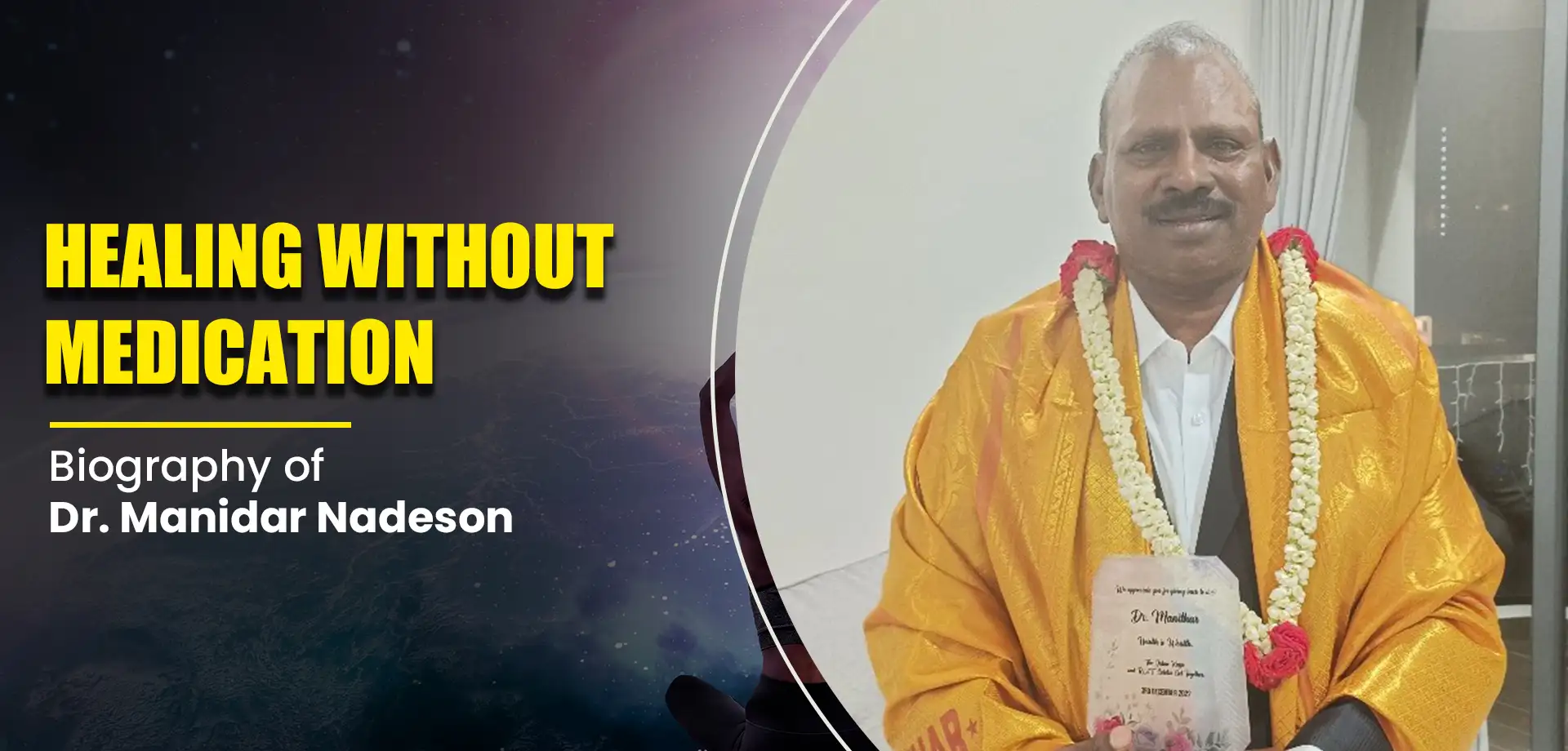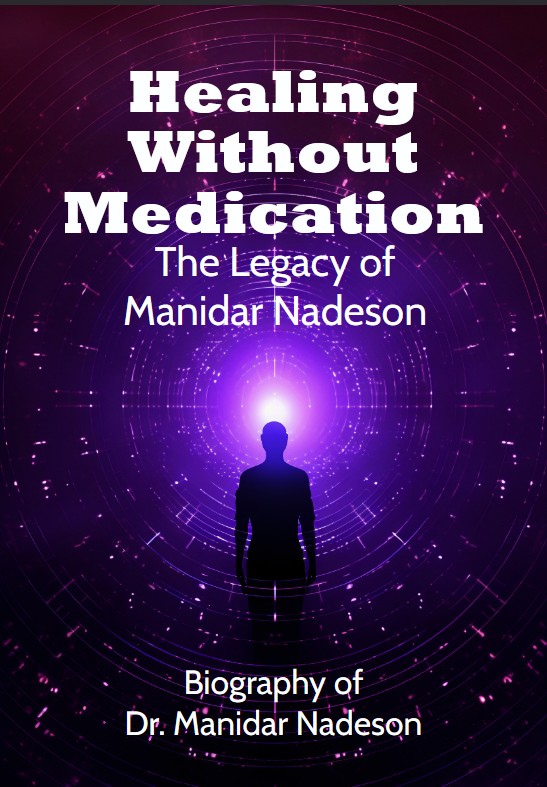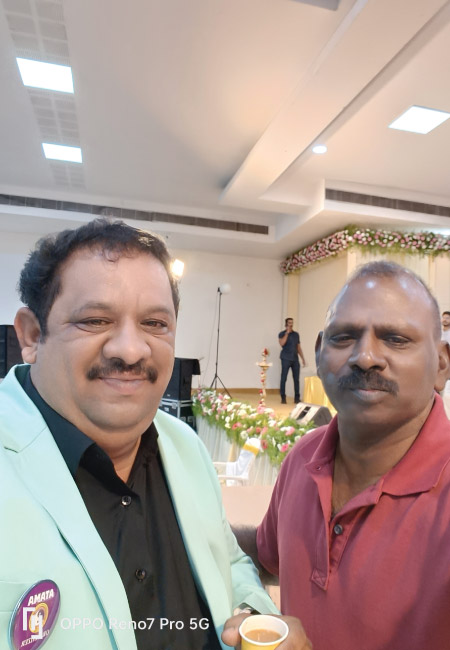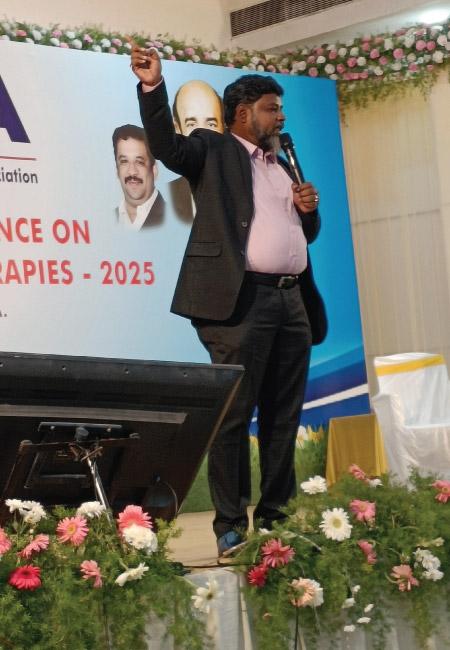

“Some journeys begin with a uniform, others with a vision. Mine began with a legacy—and a calling to serve.”
Introduction
My name is Dr. Manidar Nadeson, and I have lived many lives within this one. At 61 years of age, I am still discovering, still serving, and still healing. My journey has been long, unpredictable, and deeply humbling—shaped by disciplines that span from police enforcement and aerospace engineering to oil and gas leadership, and ultimately, to healing without medication, a sacred practice passed down through my bloodline.
I was born into a legacy. Not of wealth, but of wisdom. My grandfather, Ayakanu, was a healer brought to Malaysia from Tamil Nadu, India, during British colonial rule. In a time where there were no hospitals, no access to professional medicine, and no structured healthcare, he offered hope through drugless healing. He worked with his hands, his heart, and his intuition, diagnosing and treating people using the subtle intelligence of the body itself. That was my first classroom, and he was my first teacher.
My father, on the other hand, was a different kind of healer. A chief engineer at a local rubber factory, he was a problem-solver, a mechanic, a builder. He fixed machines, systems, and operations with his bare hands. Though he never had formal education in engineering, he ran massive operations with precision and pride. Watching him work laid the foundation for my technical path. From these two men, I inherited a split but balanced identity—the soul of a healer and the mind of an engineer.
My earliest years of service began in law enforcement. I served as a police officer during one of the most unstable periods in Malaysia, marked by domestic terrorism and communist insurgency. It was not a job I took for prestige—it was a commitment to protect my nation and restore peace. It was dangerous. I witnessed violence. I lost colleagues. But I survived—and was later honored with the Warrior’s Award, one of the most prestigious recognitions for courage and service in combat. That time in my life taught me how to face death without fear, how to act decisively, and how to respect discipline as a way of life.
After law enforcement, I transitioned to the world of aeronautical engineering. With only a British-style education and grit in my heart, I walked into an American-led aviation institute in Malaysia and earned a place in their first batch. I trained on advanced aircraft like the Sikorsky S-61, the Fighter FI, and the Charlie Hercules. I became proficient in everything from aircraft maintenance and powerplant systems to ground testing and flight certifications. It was here that I learned how machines breathe, how engineering is just another form of healing—only this time, the patient was made of steel.
Phase 1 : Law Enforcement Years
“Service begins when safety is under threat, and courage steps forward while fear stays behind.”
My journey into the world of service began not with a dream—but with a crisis.
It was the late 1970s in Malaysia, a time marked by internal unrest, communist insurgencies, and acts of terrorism. The country was still finding its footing, recovering from colonial influences, and struggling to create unity amidst chaos. For many young men like me, the world offered only two options: step forward to defend the nation, or watch it fall apart. I chose the first.
I joined the Royal Malaysian Police Force during this time of unrest. I was not from a background of privilege or political influence. I was simply a young man with an unshakable instinct to serve and a willingness to risk everything for peace. When I put on that uniform, it wasn’t about pride or power—it was about purpose.
Back then, law enforcement wasn’t about writing tickets or enforcing road rules. We were on the front lines of national defense. The country faced constant threats from armed insurgents who challenged the sovereignty and security of Malaysia. These weren’t isolated incidents—they were daily realities. Ambushes. Explosions. Gunfire. Danger was the air we breathed.
I still remember the first mission that changed my life. We were tasked with tracking down a group of insurgents that had crossed into a restricted border zone. I had barely been on the force for six months, yet here I was, facing enemies with real weapons and real intent to kill. Fear? Yes, it was there—but so was clarity.
We moved through the dense jungles with silent discipline. Every snap of a twig was a warning. Every rustle of leaves might be the last sound we heard. When the attack came, it was sudden and brutal. Shots rang out. We returned fire. We didn’t run. We held our ground. That day, I faced death face-to-face, and I survived. But not everyone on my team did.
It was one of many such encounters. The truth is, we lost many good men during that period. Friends. Brothers. Heroes. But we did not lose the mission. Slowly, steadily, we reclaimed territory, dismantled terrorist networks, and brought law and order to places that had forgotten what peace looked like.
For my contribution during that dark chapter of Malaysia’s history, I was honored with the “Warrior’s Award”, one of the highest national recognitions for bravery in the face of armed conflict. But I never wore that medal as a symbol of achievement. To me, it was a memory. A reminder of those who didn’t make it. Of the screams in the jungle. Of the price we paid for peace.
Phase 2 : Aeronautical Engineering & Aircraft Maintenance
“The sky never limits a man who knows how to rise from the ground.”

After serving in the police force and earning the Warrior’s Award, I stood at a crucial turning point in my life. While I had survived the battlefield, a part of me yearned for a different kind of challenge—a discipline that would elevate me intellectually and technically, while still serving a larger purpose.
That search brought me into the world of aeronautical engineering, an industry that, at that time, was just starting to take root in Malaysia. American aviation experts had launched a new program to train locals in aircraft maintenance and engineering, and the opportunity felt like destiny calling. I had no elite qualifications. I came from a British-era education system—Cambridge-based, rigorous, but not the kind that would easily open doors in modern industry. Still, I walked into the interview room with conviction, and I walked out with a chance to rewrite my future.
Aeronautical engineering is not something you simply study—it is something you live and breathe. I began my training under intense pressure. The systems, the terminology, the precision—it was all overwhelming at first. But I wasn’t there to play safe. I was there to master the sky. I focused, absorbed, and
I became specialized in the maintenance and engineering of some of the most sophisticated flying machines of our time—Sikorsky S-61 helicopters, Fighter FIs, and Charlie Hercules aircrafts. These were not toys. These were beasts of the air, machines that required meticulous attention, unshakable discipline, and complete alignment between man and mechanism.transformed.
I worked on everything from A-check to E-check—a complete breakdown and rebuild of the aircraft. When we performed what was called a Check Five, we stripped the entire chopper down to its core. Every bolt, every blade, every system had to be inspected, tested, recalibrated, and reconstructed. And then, once reassembled, we would test the aircraft in real-time—a procedure that required nerves of steel. As a member of the ground crew, I was entrusted with the responsibility of flight-readiness. One mistake, and lives could be lost.
One of the most intricate tasks I handled involved compass calibration, especially in helicopters that had remained grounded for too long. A static aircraft loses its magnetic memory, and recalibrating it requires not only technical precision but a deep understanding of atmospheric conditions and navigation dynamics. I had to align the compass systems while maintaining the aircraft’s flight orientation—it was like syncing the nervous system of a metal giant.
Phase 3 : Oil & Gas Industry – Offshore Engineering Leadership
“You don’t lead from the top of a ship - you lead from the heart of the storm.”

After mastering the skies, I descended into the depths of another colossal industry—oil and gas. At first glance, it may seem like a sudden shift: from aircraft hangars to floating rigs, from helicopters to hulls. But to me, it was a natural transition. I had built my technical core, and now I was ready to build nations’ backbones—through oil fields, offshore platforms, pipelines, and industrial engineering that powered the world.
My decision to join the oil and gas sector was both financially motivated and spiritually aligned. I had learned that healing doesn’t always have to happen in clinics—sometimes, it happens on platforms where human effort fuels global energy. The first opportunity came through a project in China, where offshore engineering was rapidly evolving. I stepped into a world where the sea was your foundation, and every structure you built had to survive nature’s wrath.
I began working on FPSO vessels (Floating Production Storage and Offloading units), jackets, platforms, and pipeline installations. From structural welding to full-scale commissioning, we were building what the world doesn’t often see—the skeleton of modern civilization. I was soon involved in projects across Malaysia, Indonesia, Thailand, China, Italy, and France, offering my services to some of the biggest names in the energy game: Shell, Exxon, Petronas, and other global operators.
I wasn’t just a technician—I was a leader, often overseeing operations that involved 500 to 600 skilled men offshore at a time. The stakes were massive. When you’re suspended over the sea, leading a platform team that’s welding live modules or laying subsea pipelines, you don’t get a second chance. Precision isn’t a recommendation—it’s survival.
The sea teaches you things no classroom ever can. I’ve worked through cyclones, monsoons, rogue waves, and unexpected equipment failures. There were moments where we had to anchor down in the middle of chaos, refusing to abandon the mission, holding tight to the task while the world around us tossed and turned. We weren’t passengers on these vessels—we were commanders, each with a role that directly impacted not just the success of the project, but the safety of every soul on board.
One incident remains unforgettable: we were launching a jacket platform in China—a massive structure designed to support an entire oil facility—and due to unforeseen circumstances, it collapsed and drifted into open waters. Within moments, the situation escalated into a crisis. We feared damage to surrounding ships and the loss of an incredibly valuable structure. I coordinated with the Search and Rescue (SAR) unit, and through a multi-nation operation, we recovered the jacket all the way from the Philippines. That moment was not just about engineering—it was about responsibility, response, and resolve.